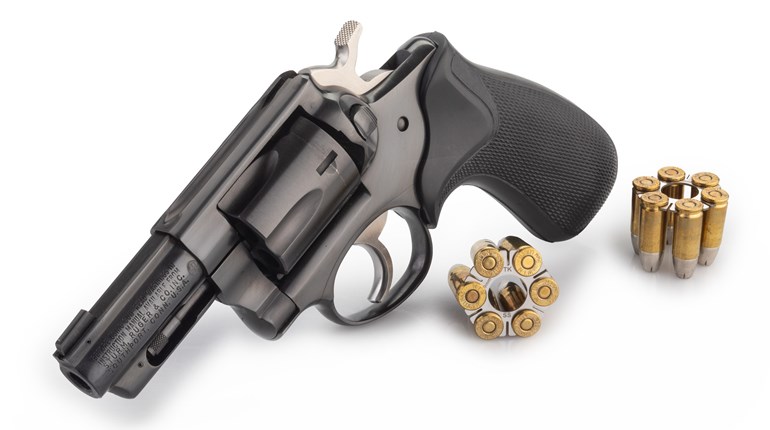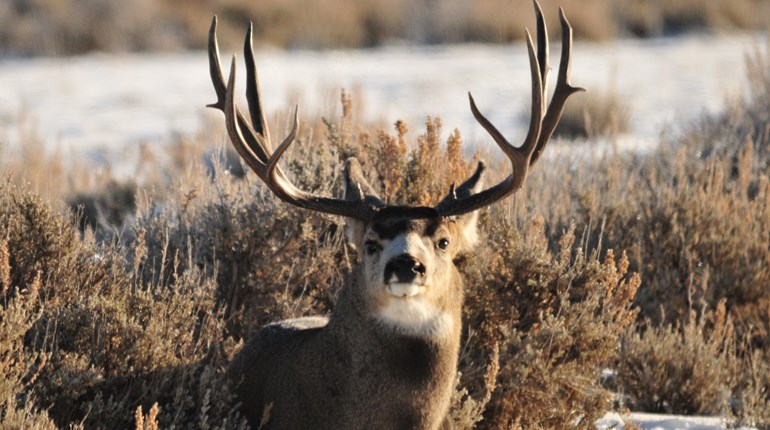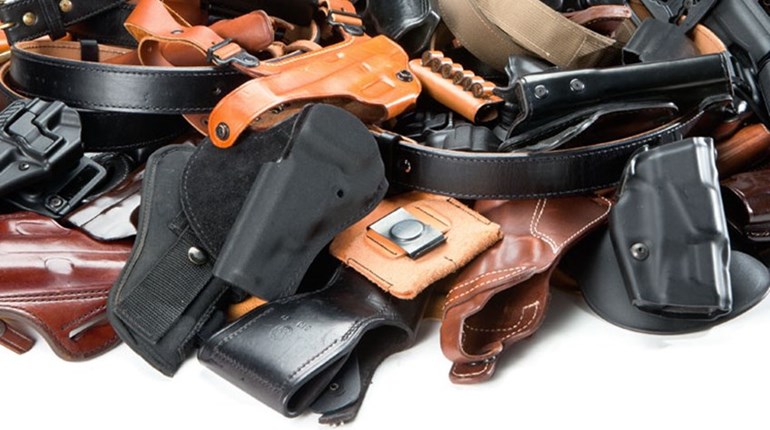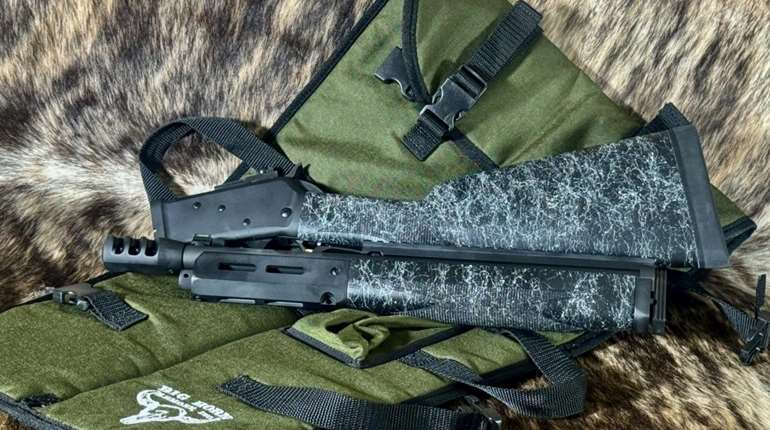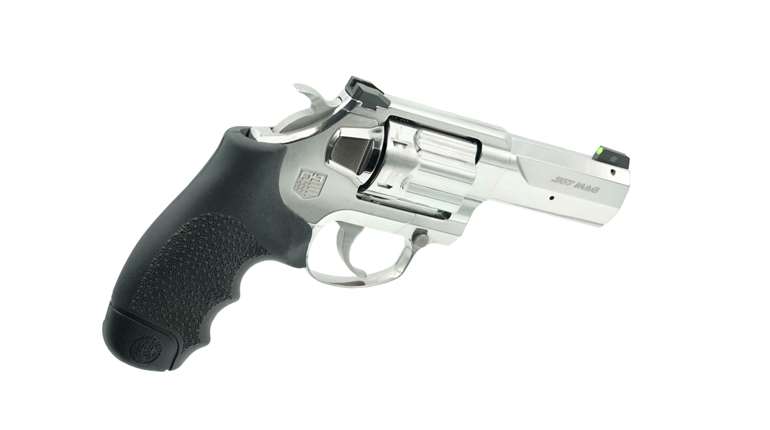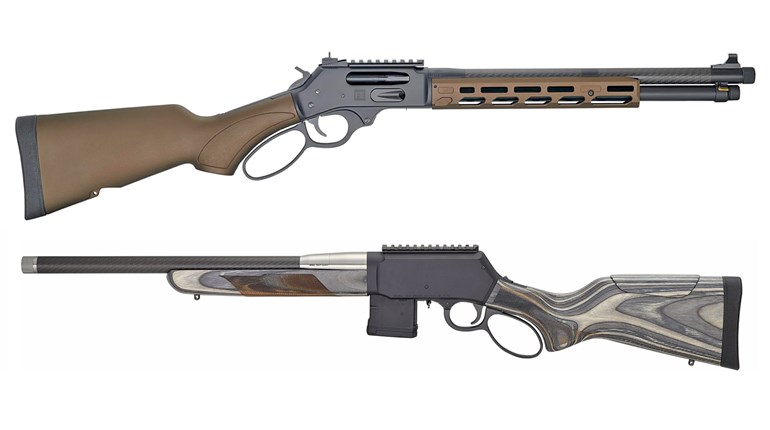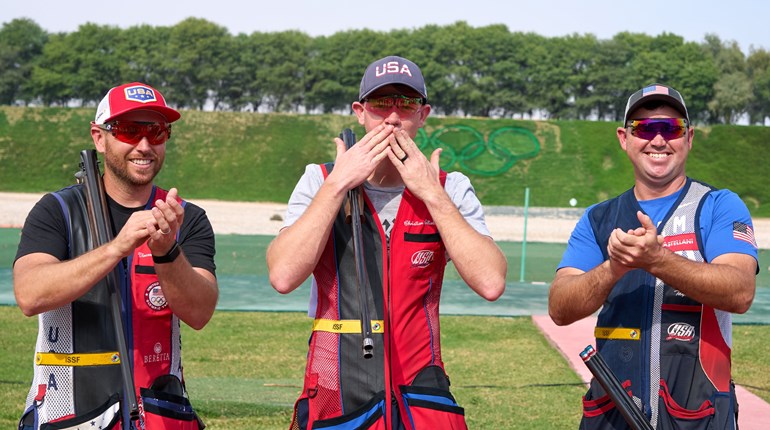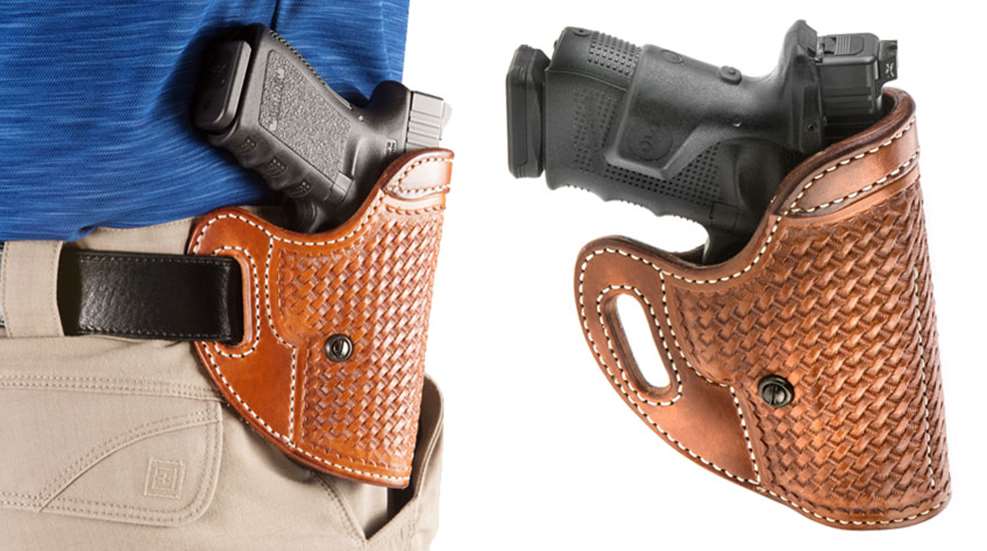
When it comes to carrying a handgun, the decision-making process can often be pushed to its limits. Pinning down the best way to pack a pistol has been a subject that’s been contemplated since the very first handgun was built. Handgun-retention gadgets of all manner and sorts have been developed, designed and re-designed for a couple of centuries, and while there are endless possibilities available now, choosing the right device or method can be as provocative as choosing something off the menu at Emeril’s Delmonico.
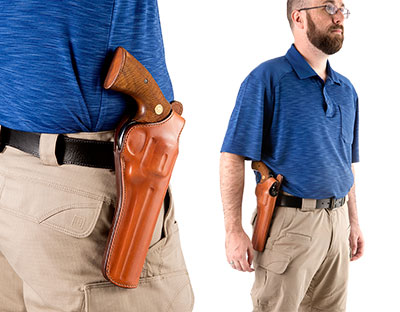
After a great deal of experimentation and experience, I’ve developed a few of my own ideas about carrying a pistol. These ideas encompass literally a lifetime of observing other gun-toters, my own experiences in the field, along with having been a peace officer required to carry a sidearm both in uniform and plainclothes every day for many years.
From an early age, I watched in awe as my dad, Skeeter, outfitted himself daily with a handgun, both for police work and everyday sporting activities. His particular plans on a given day dictated what method he would utilize to carry his handgun. I grew up watching this, and when I was old enough (about 10 years old), I was allowed to start carrying a sidearm of my own, a Colt .22 single-action revolver. It came sheathed in a nice Garrett Allen custom-built holster designed to fit on my pants belt on my strong side. I was taught at a very young age that quick-draw was absolutely out of the question, and I heeded that advice. I regularly practiced drawing and firing in a reasonable amount of time, and became pretty handy. Naturally, I drew and fired with a two-hand hold.
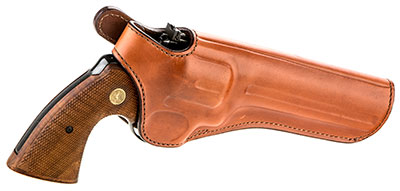
I carried that Colt in its little rig for a number of years, later acquiring another Colt Single Action Army (SAA), this time in .45 Colt. My rig for the SAA was a Bianchi belt-and-holster outfit with cartridge loops. Again, I packed that combo for a number of years, both while hunting in the desert afoot and during horseback excursions. I always wore the Bianchi rig over my belt, and was relatively comfortable doing so, though I wasn’t as comfortable carrying the belt and holster as much as carrying my old shuck made for my belt.
I later went to work on a large cattle and game ranch and was able to pack a sidearm every day. The work entailed assisting the ranch’s game biologist, working cattle and guiding on a few elk hunts. I carried a 6-inch-barrelled Colt Python chambered in .357 Mag. in a Bianchi belt-and-holster rig with cartridge loops, similar to my SAA rig. While on foot, I found the rig to be very comfortable, even while walking long distances. On horseback, however, the outfit wasn’t quite as easy to carry—the Python’s grip would occasionally dig into my side. A 4-inch revolver would have been more practical.
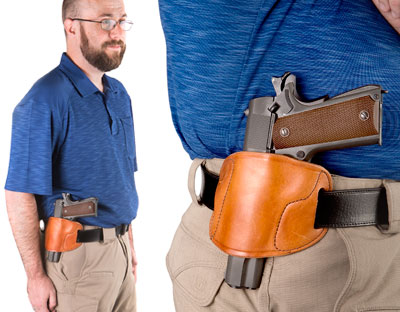
I always figured a cross-draw-style holster would have been quite accommodating on long rides. Some handgunners look sideways at those who prefer the cross-draw method, though it’s outstanding for some uses, such as spending many hours driving a car or riding a horse or side-by-side ATV. When the cross-draw rig is riding just above the hip bone, the handgun is easily accessible and can be put into action very quickly. For a right-handed police officer, cross draw is ideal for transporting a prisoner while driving, as the firearm is not easily accessible. Cross draw is also handy when carrying a large pistol or revolver under a coat, as it conceals the handgun better than most any other shuck. That said, a cross-draw rig should never be used on a police duty belt such as the Sam Browne, as it’s a sweet invitation for a crook to jerk the gun from the officer’s rig, since the butt of the pistol is oriented forward.
Carrying these belt-and-holster rigs over the years conditioned me for my first law enforcement job as a uniformed patrol officer with the New Mexico State Police. The traditional sidearm rig for the NMSP was, and still is, the Sam Browne belt and holster. This outfit was designed to fit over the pants belt and is held in place by leather keepers, along with the shoulder (or “suicide”) strap. I found the Sam Browne to be a very comfortable gun belt, whether on foot or while driving. The solid stature of the rig, held tightly to the pants, made drawing the sidearm a breeze. The Sam Browne positions the pistol in a slightly forward-canted position, further assisting the user in an unrestricted draw.
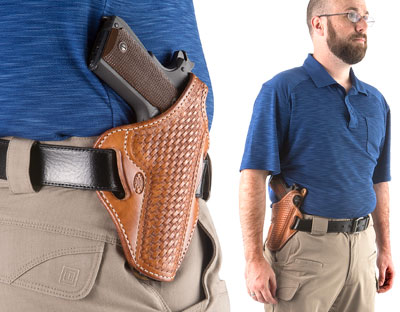
Carrying a sidearm as a plainclothes investigator poses a challenge beyond that of the uniformed officer carrying a standard duty rig. I learned this when I became a special agent with the U.S. Customs Service working the U.S./Mexico border. Generally, a plainclothes agent wishes to keep his or her firearm concealed, which poses the same concerns as a civilian in regard to concealed carry.
Starting out as a green criminal investigator, I initially carried a Government Model Colt 1911 in .45 ACP. My rig of choice was an El Paso Saddlery #77 Tortilla holster. Worn on the strong side on the belt, the #77 keeps the pistol tight to the hip. I generally wore a sport coat or a light jacket over it, which worked nicely.
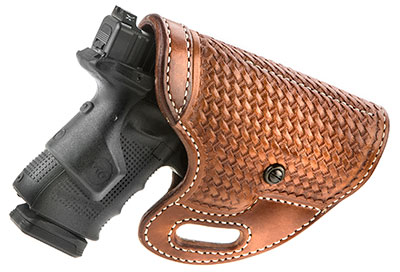
Years later, the Service switched primary sidearms to the Glock G19, at which time I was required to retire the old Tortilla rig. To replace it, I chose another El Paso Saddlery outfit, the Double Agent dual-position holster. This holster was compact and held the pistol snug to the body. It had a slot-and-backflap configuration that allowed the shooter to carry it strong side with a slight forward cant or cross draw. I got a lot of use out of that rig.
During my first couple of years with the Customs Service, the 1911 was an approved sidearm. Being a devoted fan of the 1911, I was thrilled to have the opportunity to carry one as my primary gun. We are quite aware of the popularity of the 1911 over the decades, though unfortunately the model is waning among law enforcement agencies. One agency famous for carrying the 1911, and more specifically the Colt Lightweight Commander (LWC), is the Texas Rangers. Known for carrying various types of belt-and-holster outfits over the years, the Rangers preferred a particular style for the LWC. S.D. Myres was one of the most famous leather companies in the state of Texas. Based in El Paso, Myres produced some of the finest holsters ever built. At one time, famous lawman Tom Threepersons worked for the company and designed some of the most famous holster styles of the day. Myres’ work was, and is, coveted by many, including many Texas Rangers.
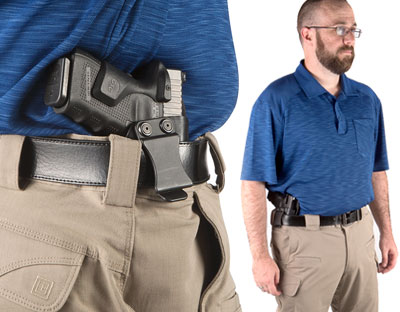
Decades ago, Texas Ranger Tol Dawson—a fine leather craftsman when he wasn’t chasing criminals—designed a holster for the LWC that incorporated his own take on the S.D. Myers/Threepersons design. The result was stunning. A compact, heavy-leather holster, usually hand-tooled, the Dawson LWC holster is perfect for carry either on a belt or duty rig. I’m fortunate enough to own one that once belonged to my friend and legendary Texas Ranger, Joaquin Jackson. The Tol Dawson holsters are rare, as he unfortunately passed away some years ago. For those interested, Mike “Doc” Barranti, head honcho at Barranti Leather, has resurrected the Dawson design in a model dubbed the Border Ranger.
While working the streets as an investigator, I often didn’t carry my sidearm in a holster rig of any kind. I would often find myself using inside-the-waistband (IWB) carry, which I’ve done long enough to be comfortable with. I would not recommend IWB carry without a holster, especially since there are plenty of solid IWB holster options on the market.
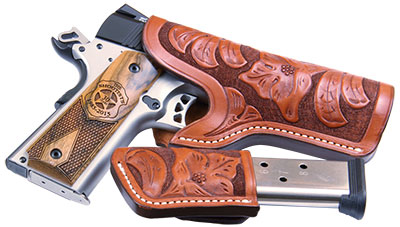
There are several different methods of IWB carry, though I’ve only used a couple. The “Israeli carry” moniker is popular because the Israelis train to carry their pistols in the waistband on the strong side with the chamber empty. Now, I’ve heard most of the arguments about carrying a single-action semi-auto pistol with an empty chamber. I never carried this way as a lawman, but know several who have. I’ve practiced this method a great deal, and I’ve found that with a good deal of training, I can draw, chamber a round while bringing the sights to my eyes and fire about as quickly as drawing and firing in the cocked-and-locked style. Obviously, safety is the main reason one would carry with an empty chamber, and I fully understand that. Extensive training, I believe, might convince the empty-chamber carrier to think otherwise.
One of my favorite carry methods has long been the cross-draw, where the pistol is in the holster on the weak side, butt forward. A lot of cops and other shooters might disagree with me here, but that’s the way I’ve done it off and on for years. I find this method convenient, comfortable, fast and effective. It has worked for me with full-size and compact handguns alike.
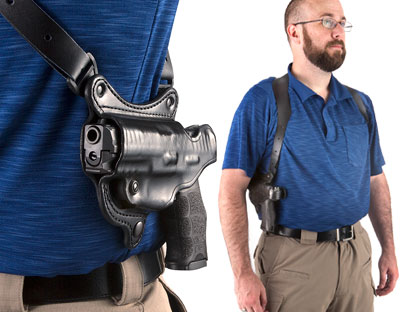
Shoulder-holster rigs have been quite popular with some police detectives, sportsmen and those looking for alternative concealed-carry methods. For use with a small handgun, they’re a decent option, but drop a heavy revolver or full-size semi-automatic in one for any length of time, and you’re going to wear yourself out in short order. Along with causing an aching back with a heavy handgun, they don’t conceal the big guns well. I tend to shy away from the shoulder holster, but to each his or her own—many shooters prefer them.
Another popular carry method is the ankle holster. I’ve known many cops and armed citizens who love this technique. This method is almost exclusively used with smaller handguns for obvious reasons. I’ve known officers who carry exclusively in an ankle holster, particularly in the summer months when wearing a jacket isn’t comfortable. I’ve never used an ankle rig simply because I’ve always worn boots, which clearly would be an impossible pairing. I believe the ankle rig should only be used for a last-ditch backup gun. Bending or kneeling down, pulling the pants leg up, drawing and then getting a proper sight picture is a time consuming and difficult process. If you have the time for all that, fine. In a bad situation, you usually won’t.
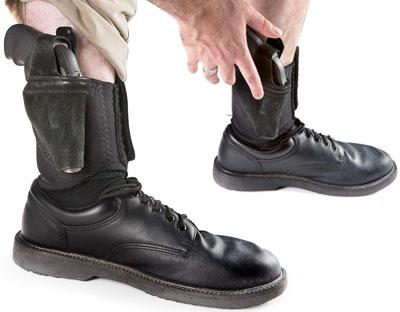
If you choose to carry a pistol, you’re going to need a holster. I suggest you enlist a good leather artisan to do the work for you, and there are a number of such craftsmen out there. Experiment with various styles of holster rigs and find one you’re comfortable with. Don’t settle until you’ve found the right package.
If you strive for the best when it comes to your carry handgun, don’t settle for less than the best when it comes to your holster.












